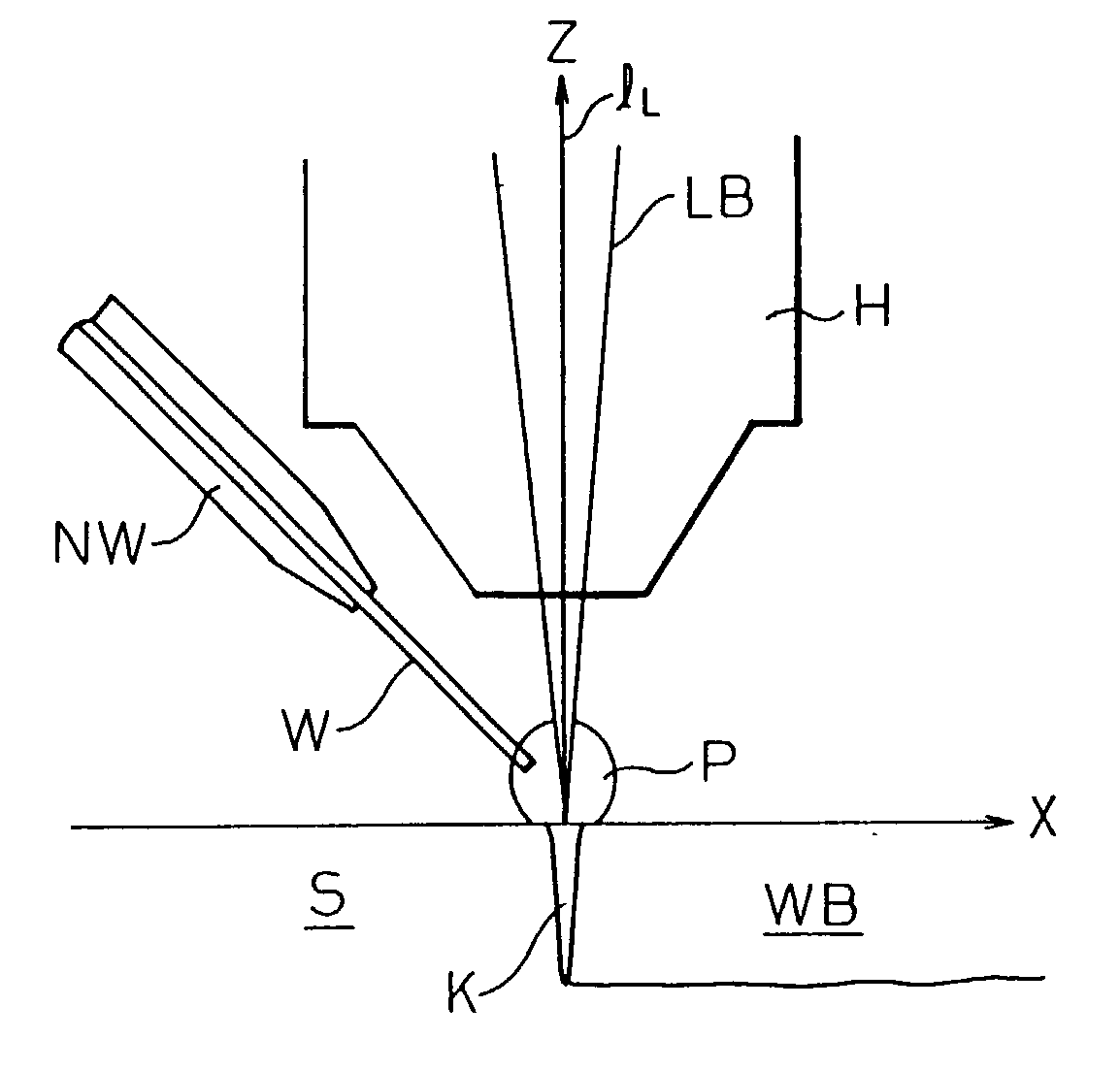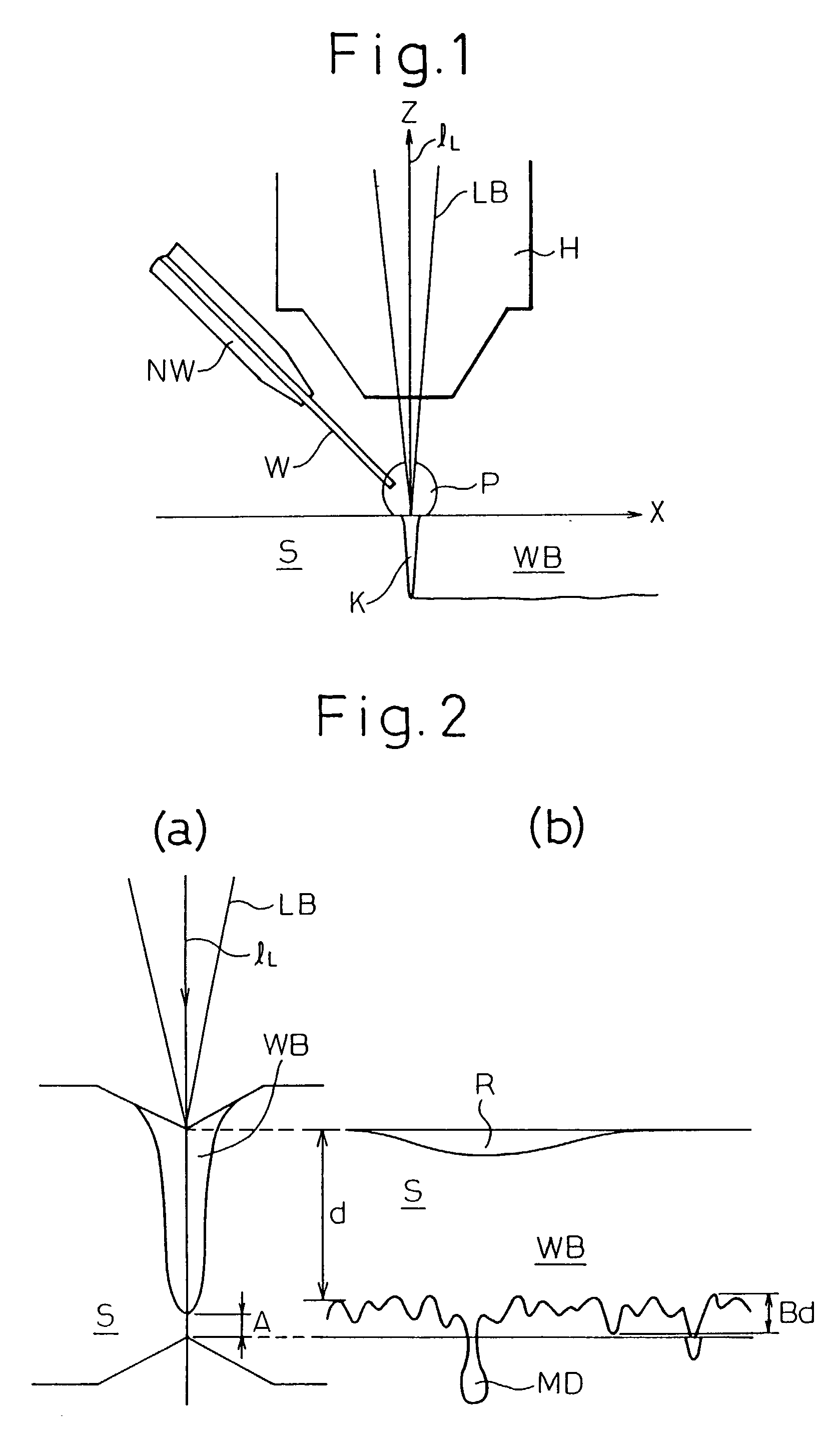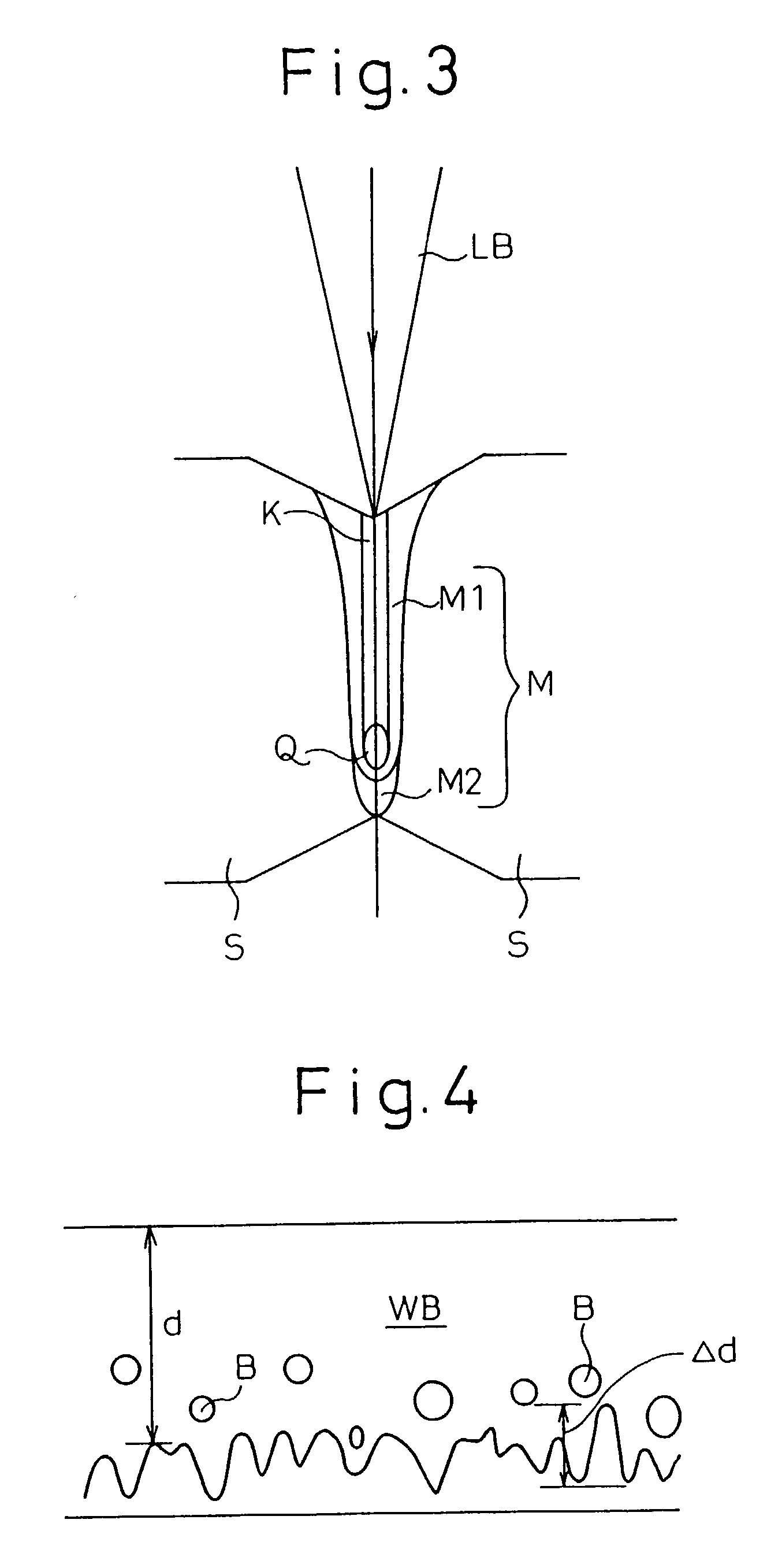Method of butt-welding hot-rolled steel materials by laser beam and apparatus therefor
a hot-rolled steel and laser beam technology, applied in welding/cutting media/materials, manufacturing tools, welding apparatus, etc., can solve the problems of decreasing increasing the depth of penetration d temporarily, and reducing the depth of penetration, so as to achieve sufficient reducing ability, high reducing ability, and reducing ability of metal elements.
- Summary
- Abstract
- Description
- Claims
- Application Information
AI Technical Summary
Benefits of technology
Problems solved by technology
Method used
Image
Examples
example 2
[0101] SS 41 steel materials at about 1,000.degree. C. were tack-welded, using a 45 kW CO.sub.2 gas laser, according to the second invention. In order to shield the welding atmosphere from the air, welding was conducted while helium was being blown as a shield gas. Moreover, welding was conducted at a welding speed of 3 m / min while the laser beam was oscillated at a frequency of 50 Hz at an amplitude of 0.4 mm. As a result of conducting tack welding with laser as explained above, the variation ratio (Bd / d) thus obtained was about 7%. On the other hand, when the same SS 41 materials were tack-welded by laser by a conventional method wherein the laser beam was not oscillated, and the other conditions were the same as those mentioned above, the variation ratio (Bd / d) thus obtained was 15%.
[0102] Furthermore, when hot-rolled steel materials were butt-welded, neither the meltdown of molten metal nor lowering of the bonded area ratio was observed.
[0103] FIG. 17 shows one embodiment of a l...
example 3
[0111] According to the third invention, steel materials at about 1,000.degree. C. were butt-welded by a 45 kW CO.sub.2 gas laser while center gas (helium) was being blown. The welding speed V was 3 m / min. A filler wire containing 3% of Ti was employed, and the filler wire supply speed was determined to be 4 m / min. The variation ratio Bd / d was lowered to about 10% from about 20% which was obtained when the welding was conducted without supplying the filler wire. Moreover, neither meltdown of molten metal in the butt welding portion nor lowering of the bonded area ratio was observed.
[0112] As explained above, according to the third invention, formation of blow holes in the weld bead is prevented; the depth of penetration in the weld bead portion is made uniform; a bead shape with a flat bottom can be obtained without spiking and excessive penetration. Consequently, a defectless butt weld zone is obtained, and the bonding strength is improved.
[0113] The fundamental construction of the...
example 4
[0118] An embodiment of the present invention will be explained by taking bonding of hot-rolled sheet bars as an example. FIG. 24 is a schematic side view of an apparatus for bonding sheet bars provided to a hot rolling facility. FIG. 25 is a plan view of FIG. 24. The front end and the tail end of each of the sheet bars S1, S2 were cut off along the width direction by a flying shear 305 to form groove faces. The sheet bars S1, S2 each had a length of 30 m, a width of 1,100 mm and a thickness of 35 mm. Moreover, the sheet bars S1, S2 had a temperature of 1,000.degree. C., and their transfer speed was 90 m / min. The time from shearing to the start of welding was about 20 sec, and the thickness of the scales thus formed on the welding surface was about 50 .mu.m. The tail end face of the preceding sheet bar S1 and the front end face of the following sheet bar S2 were then butted with each other, and the butt portion 305 was welded by moving a welding head 339 along the butt portion 305, ...
PUM
| Property | Measurement | Unit |
|---|---|---|
| Length | aaaaa | aaaaa |
| Fraction | aaaaa | aaaaa |
| Angle | aaaaa | aaaaa |
Abstract
Description
Claims
Application Information
 Login to View More
Login to View More - R&D
- Intellectual Property
- Life Sciences
- Materials
- Tech Scout
- Unparalleled Data Quality
- Higher Quality Content
- 60% Fewer Hallucinations
Browse by: Latest US Patents, China's latest patents, Technical Efficacy Thesaurus, Application Domain, Technology Topic, Popular Technical Reports.
© 2025 PatSnap. All rights reserved.Legal|Privacy policy|Modern Slavery Act Transparency Statement|Sitemap|About US| Contact US: help@patsnap.com



